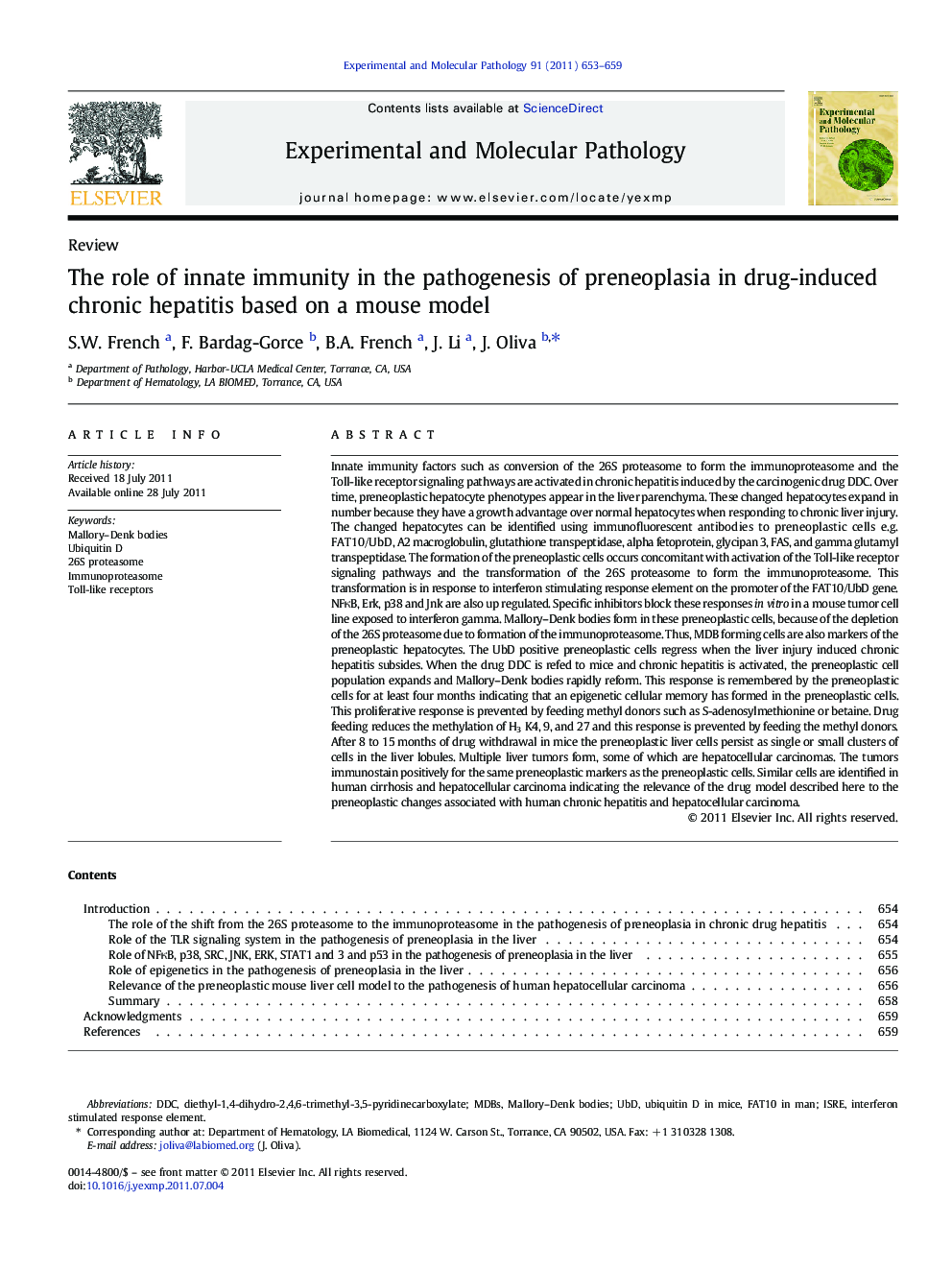| Article ID | Journal | Published Year | Pages | File Type |
|---|---|---|---|---|
| 2775196 | Experimental and Molecular Pathology | 2011 | 7 Pages |
Innate immunity factors such as conversion of the 26S proteasome to form the immunoproteasome and the Toll-like receptor signaling pathways are activated in chronic hepatitis induced by the carcinogenic drug DDC. Over time, preneoplastic hepatocyte phenotypes appear in the liver parenchyma. These changed hepatocytes expand in number because they have a growth advantage over normal hepatocytes when responding to chronic liver injury. The changed hepatocytes can be identified using immunofluorescent antibodies to preneoplastic cells e.g. FAT10/UbD, A2 macroglobulin, glutathione transpeptidase, alpha fetoprotein, glycipan 3, FAS, and gamma glutamyl transpeptidase. The formation of the preneoplastic cells occurs concomitant with activation of the Toll-like receptor signaling pathways and the transformation of the 26S proteasome to form the immunoproteasome. This transformation is in response to interferon stimulating response element on the promoter of the FAT10/UbD gene. NFκB, Erk, p38 and Jnk are also up regulated. Specific inhibitors block these responses in vitro in a mouse tumor cell line exposed to interferon gamma. Mallory–Denk bodies form in these preneoplastic cells, because of the depletion of the 26S proteasome due to formation of the immunoproteasome. Thus, MDB forming cells are also markers of the preneoplastic hepatocytes. The UbD positive preneoplastic cells regress when the liver injury induced chronic hepatitis subsides. When the drug DDC is refed to mice and chronic hepatitis is activated, the preneoplastic cell population expands and Mallory–Denk bodies rapidly reform. This response is remembered by the preneoplastic cells for at least four months indicating that an epigenetic cellular memory has formed in the preneoplastic cells. This proliferative response is prevented by feeding methyl donors such as S-adenosylmethionine or betaine. Drug feeding reduces the methylation of H3 K4, 9, and 27 and this response is prevented by feeding the methyl donors. After 8 to 15 months of drug withdrawal in mice the preneoplastic liver cells persist as single or small clusters of cells in the liver lobules. Multiple liver tumors form, some of which are hepatocellular carcinomas. The tumors immunostain positively for the same preneoplastic markers as the preneoplastic cells. Similar cells are identified in human cirrhosis and hepatocellular carcinoma indicating the relevance of the drug model described here to the preneoplastic changes associated with human chronic hepatitis and hepatocellular carcinoma.
► Interferon γ drives MDB formation and SAMe prevents it. ► Interferon γ drives UBD up regulation blocked by SAMe. ► Interferon γ induces TLR4 signaling blocked by SAMe. ► Interferon γ induces immunoproteasome formation. ► Interferon γ down regulates the 26S proteasome blocked by SAMe.
